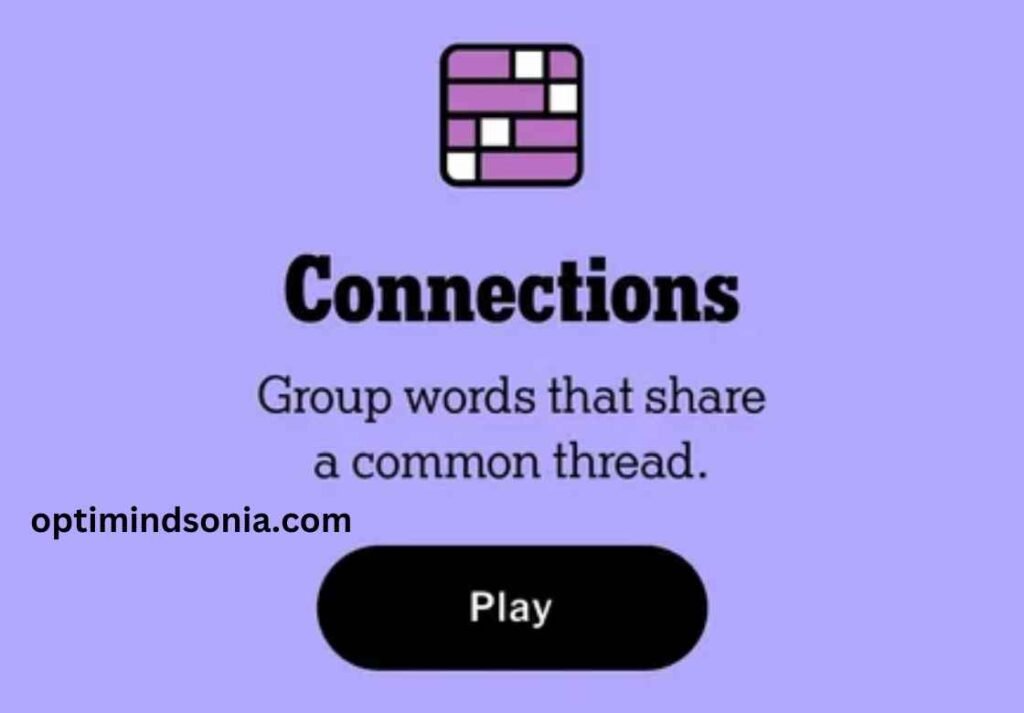In an era where information is abundant yet often fragmented, staying informed about global events has become increasingly challenging. The New York Times, one of the world’s most trusted news sources, offers a tool that helps readers navigate this complex information landscape: NYTimes Connections. This feature is designed to deepen your understanding of world events by connecting you with a network of insights, expert analysis, and contextual information.
What is NYTimes Connections?
NYTimes Connections is a curated service provided by The New York Times that aims to enhance readers’ comprehension of news by linking related articles, background information, and expert opinions. It’s more than just a news aggregator; it’s a comprehensive guide that helps you piece together the larger narrative behind current events.
This tool is particularly valuable for readers who want to go beyond the headlines and explore the interconnectedness of global issues. Whether you’re trying to understand the economic implications of a political event or the cultural context of a social movement, NYTimes Connections brings the pieces together, offering a clearer and more nuanced view.
How NYTimes Connections Works

At its core, it functions by weaving together content from various sections of the newspaper. Here’s how it works:
- Related Articles: When you read an article, NYTimes Connections provides links to other pieces that cover similar topics or offer additional perspectives. This allows you to explore different angles of the same story.
- Background Information: Complex issues often require background knowledge. offers summaries, timelines, and explainer articles that help you understand the historical and social context behind the news.
- Expert Analysis: In addition to news articles, NYTimes Connections includes opinion pieces and analyses from experts in various fields. This expert commentary can provide deeper insights and help you form a well-rounded understanding of the issues at hand.
- Interactive Features: To make the learning process more engaging, it occasionally includes interactive elements such as infographics, maps, and videos. These tools can help visualize data, clarify complex topics, and make connections between seemingly unrelated events.
The Benefits of Using NYTimes Connections
Using NYTimes Connections offers several benefits, particularly for those who are passionate about staying informed and understanding the broader implications of world events:
- Deeper Insight: By providing connections between articles and topics, this tool helps you see the bigger picture. It allows you to understand not just what is happening, but why it is happening and what it might mean for the future.
- Efficient Learning: Instead of spending time searching for related information, it brings the most relevant content to you. This curated experience saves time while ensuring that you get a comprehensive view of the issues.
- Enhanced Critical Thinking: With access to diverse perspectives and expert opinions, you’re better equipped to critically analyze news stories. This can lead to more informed opinions and discussions.
- Staying Ahead of Trends: By understanding the connections between different events and topics, you can better anticipate how current events might evolve. This can be particularly valuable in fields such as business, politics, and academia.
Real-World Applications of NYTimes Connections

NYTimes Connections is a valuable tool for various audiences:
- Students and Educators: For those in academia, NYTimes Connections is a goldmine of information. It can be used to supplement course materials, provide case studies, or inspire research topics.
- Business Professionals: Understanding global trends is crucial in business. NYTimes Connections helps professionals stay ahead by offering insights into economic, political, and social developments that could impact their industries.
- Everyday Readers: For anyone who simply wants to be more informed,it is an accessible way to deepen your knowledge of the world. It transforms passive reading into an active learning experience.
How to Get Started with NYTimes Connections
Accessing but is straightforward:
- Subscribe to The New York Times: This service is available to subscribers of The New York Times. If you haven’t subscribed yet, you can do so on their website.
- Explore the Website or App: but is integrated into both the website and the mobile app. As you read articles, you’ll notice links and prompts that guide you to related content.
- Engage with the Content: Take advantage of the links, summaries, and expert analyses provided. The more you engage with the content, the more you’ll benefit from the connections it reveals.
Conclusion: A Smarter Way to Stay Informed
In today’s fast-paced world, understanding the complexities of global events is more important than ever. NYTimes Connections offers a powerful tool for those who want to go beyond the surface and truly grasp the dynamics of the news. By connecting you with a wealth of related information, it empowers you to become a more informed, engaged, and thoughtful reader.
FAQs
What is NYTimes Connections?
NYTimes Connections is a feature by The New York Times that helps readers understand world events by connecting them with related articles, expert analysis, and background information, providing a comprehensive view of complex topics.
How does NYTimes Connections work?
It works by linking relevant articles, providing historical and contextual information, and offering expert opinions. These connections help readers explore different perspectives and gain deeper insights into global events.
How do I access NYTimes Connections?
You can access but through The New York Times website or mobile app. As you read articles, you’ll see links and prompts guiding you to related content and analyses.



